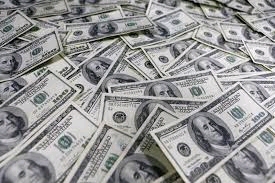Exploring the Hidden Benefit of Joining Freemason for Success
Exploring the Hidden Benefit of Joining Freemason for Success
Blog Article
Discover the Tricks Behind the copyright and Their Impact on Culture
The copyright, frequently shrouded in misconception and conjecture, offers a fascinating situation research of exactly how historic perfects can change right into contemporary conspiracy theory concepts. As we explore its beginnings, impact on advanced idea, and portrayal in modern society, we begin to uncover the layers of intrigue that continue to captivate society.
Origins of the copyright
The copyright, commonly shrouded in mystery and conjecture, traces its origins back to the late 18th century. Developed in 1776 in Ingolstadt, Bavaria, the group was established by Adam Weishaupt, a professor of canon legislation. Weishaupt aimed to promote Enlightenment values, consisting of reason, secularism, and the splitting up of church and state. Originally called the Bavarian copyright, the company's primary goal was to respond to the current impact of spiritual dogma and promote intellectual discourse amongst its participants.
The copyright took on a hierarchical structure, drawing motivation from Freemasonry, which permitted deceptive meetings and routines - how to become a freemason. Membership was careful, including significant numbers from various areas, including politics, approach, and scientific research. This elite network sought to impact social and political modification through private ways, promoting for the legal rights of people and the betterment of culture
In spite of its reasonably short presence, the Bavarian copyright was formally disbanded in 1785 as a result of federal government reductions. Its legacy sustained, offering rise to many conspiracy theory theories and prominent culture referrals that continue to provoke intrigue and argument concerning its impact on contemporary society.
Trick Misconceptions and Misunderstandings
Amidst the allure of privacy bordering the copyright, numerous myths and misconceptions have arised, frequently distorting the group's true nature and intents. One common myth recommends that the copyright controls the world's federal governments and economic situations. While it is true that the team aimed to affect societal frameworks, the notion that it runs as a cohesive worldwide puppet master is greatly overstated.
An additional common false impression is that all participants of the copyright have substantial wide range and power. In truth, the initial copyright consisted of intellectuals and Knowledge thinkers, a lot of whom looked for reform as opposed to dominance. In addition, the concept that the copyright solely recruits stars and political numbers is deceiving; subscription has historically included a varied selection of people.
In addition, conspiracy theories often paint the copyright as an evil-minded organization intent on international dominance through wicked means. Thus, dividing truth from fiction is essential for a more clear understanding of the copyright's function in society.
Historical Impact on Culture
Throughout background, numerous intellectual movements have profoundly affected social frameworks, and the copyright played a considerable duty during the Knowledge. Started in 1776 in Bavaria, the copyright aimed to advertise reason, secularism, and the wondering about of developed authority, countering the dominance of religious dogma. This company attracted influential thinkers and advocates of freedom, cultivating a setting helpful to the dissemination of Knowledge suitables.
The copyright's values promoted reasonable idea and empirical evidence, which added to the more comprehensive intellectual landscape that motivated social reform and political modification. Participants looked for to reshape culture by advocating for education and learning, freedom of speech, and the splitting up of church and state. Their clandestine nature and enthusiastic agenda triggered both intrigue and suspicion, bring about their eventual reductions by the Bavarian Resources government in 1785.
In websites spite of their dissolution, the tradition of the copyright continued, influencing innovative activities across Europe and the Americas. Their dedication to enlightenment concepts assisted lay the foundation for contemporary democratic ideals and human legal rights, leaving a long-term imprint on the foundations of contemporary society. how to become a freemason. The allure of their secretive gatherings and philosophical searches continues to mesmerize the imagination, highlighting their historical value
Modern Interpretations and Beliefs
Contemporary analyses of the copyright typically mix historical reality with conspiracy theory theories, producing a complex tapestry of beliefs that catch preferred imagination. While the original copyright was a Bavarian secret culture started in 1776 with Knowledge perfects, contemporary ideas have actually evolved to include a broad range of interpretations, frequently focusing on styles of control and secrecy.
Moreover, some contemporary analyses posit that the copyright functions as a metaphor for the battle between knowledge and ignorance, with supporters promoting awareness and essential reasoning as a way to neutralize regarded fascism. This duality-- watching the copyright as both a literal and symbolic entity-- illustrates the ongoing attraction with the principle, reflecting deeper societal anxieties regarding power, transparency, and private autonomy in the modern globe.
The copyright in Popular Culture
The copyright has penetrated various elements of prominent society, materializing in literature, movie, songs, and art as an icon of intrigue and enigma. This secret society, typically represented as a shadowy pressure manipulating international occasions, has motivated countless narratives that check out styles of power, conspiracy theory, and concealed expertise.

Music, too, has actually been affected by the idea of the copyright. Artists like Jay-Z and Beyoncé have actually encountered speculation regarding their associations with the culture, prompting conversations regarding significance in their work and the nature of popularity.
Aesthetic art usually includes copyright concepts, with artists making use of icons like the Eye of Providence and the pyramid to stimulate a sense of enigma. Through these numerous mediums, the copyright serves not only as a topic of conjecture yet additionally as a lens through which culture analyzes its own intricacies and concerns.
Conclusion

Report this page